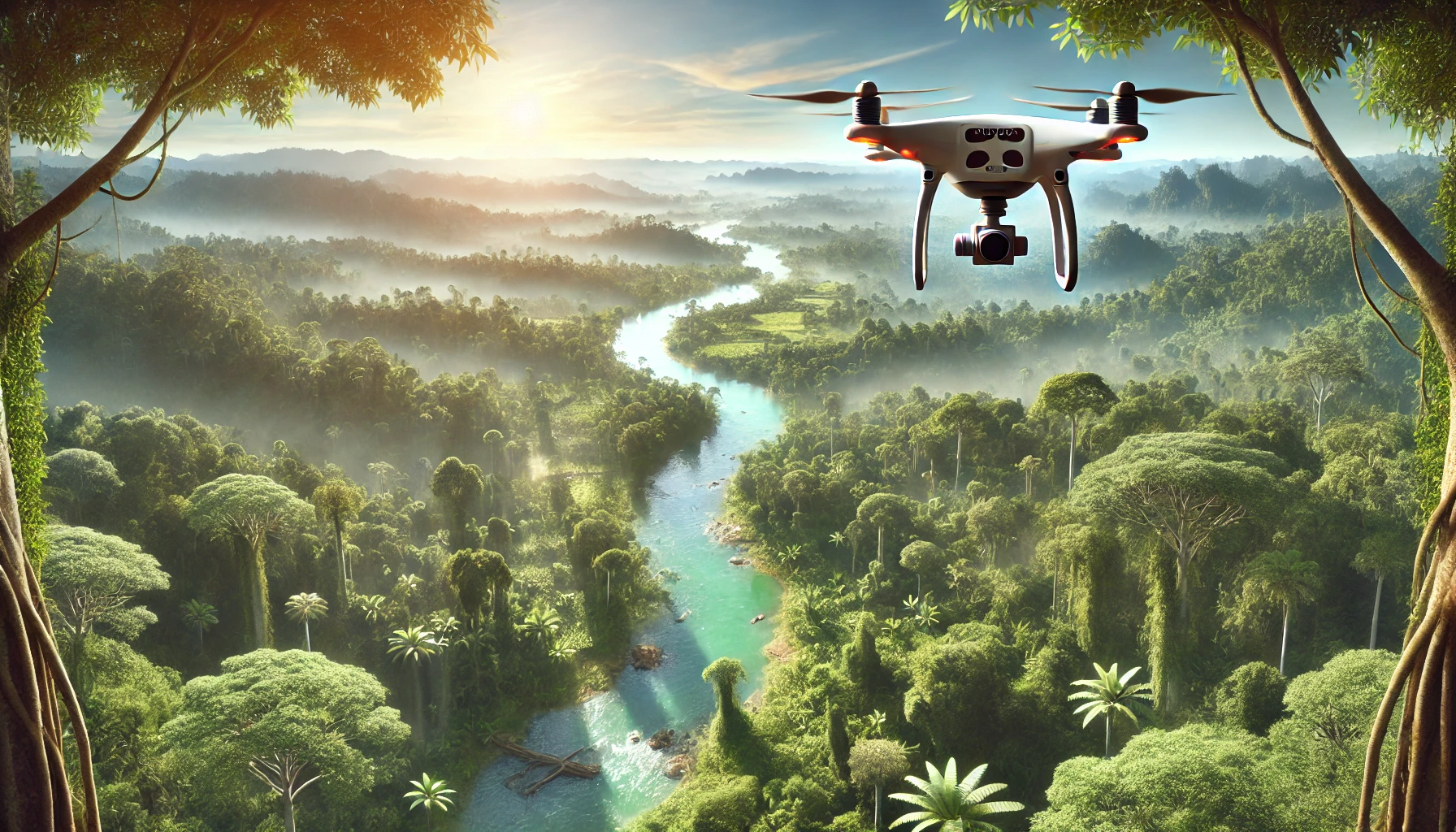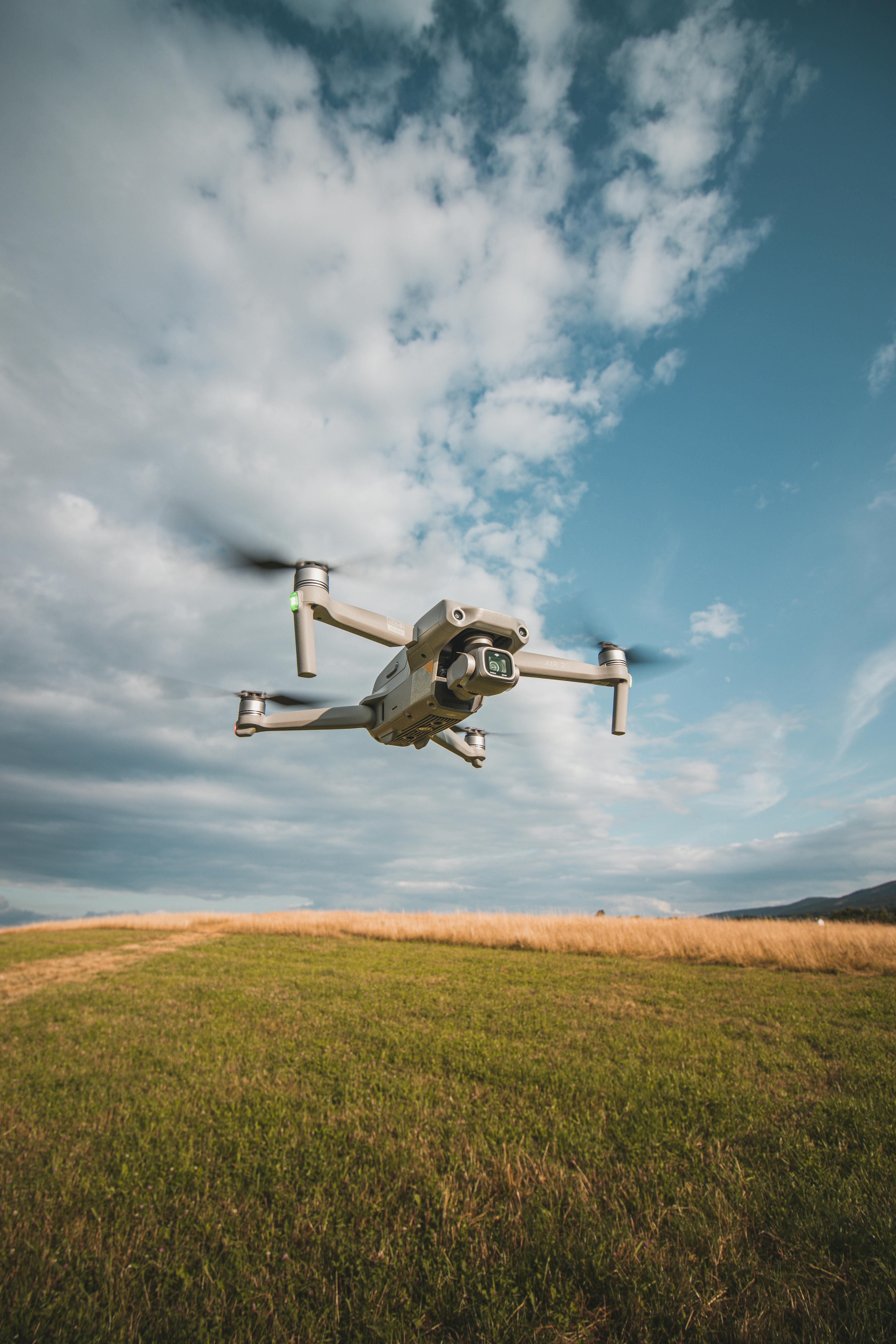
Drones in Environmental Conservation: Protecting Wildlife and Preserving Ecosystems
Published on: December 7, 2024
The advent of drone technology has ushered in a transformative era for environmental conservation. Once confined to the realms of military and commercial applications, drones are now being embraced as vital tools in the global effort to monitor, protect, and restore ecosystems. These aerial devices have proven to be indispensable in wildlife conservation, habitat assessment, anti-poaching initiatives, and much more, offering unparalleled efficiency and precision.
The Role of Drones in Wildlife Monitoring
One of the most significant challenges in wildlife conservation is the ability to monitor species without disrupting their natural behavior. Traditional methods such as on-ground observation or manned aircraft surveys are often costly, time-consuming, and intrusive. Drones, however, offer a game-changing solution.
Equipped with high-resolution cameras, thermal imaging, and GPS systems, drones can silently and effectively monitor wildlife in remote and inaccessible areas. Conservationists use drones to track animal populations, migration patterns, and behaviors, providing invaluable data to inform protection strategies. For example:
- Marine Mammal Monitoring: Drones are used to observe whale and dolphin populations, capturing detailed footage without disturbing their aquatic environment.
- Elephant and Rhino Surveys: In Africa and Asia, drones are deployed to count and track endangered species like elephants and rhinos, helping to combat poaching and habitat loss.
This technology also enables conservationists to monitor nocturnal species, leveraging thermal imaging to detect animals in the dark, thus expanding the scope of wildlife research.
Habitat Assessment and Restoration
Drones have become indispensable in habitat assessment, offering a bird’s-eye view of ecosystems that would otherwise be challenging to study. They provide high-resolution imagery and LiDAR (Light Detection and Ranging) data, allowing conservationists to map forests, wetlands, and coral reefs with remarkable accuracy.
Applications in Habitat Assessment
- Forest Monitoring: Drones help track deforestation and forest degradation, providing detailed maps that aid in reforestation projects.
- Coastal Ecosystem Surveys: They are used to monitor coral reef health, mangrove forests, and coastal erosion, enabling targeted conservation efforts.
- Agricultural Impact Studies: By assessing the encroachment of agriculture into natural habitats, drones help identify areas requiring urgent intervention.
Supporting Restoration Efforts
Drones are also playing a direct role in ecosystem restoration. For instance, drone-seeding technology is being utilized to plant trees in deforested areas. This method is faster, cheaper, and more efficient than traditional planting techniques, with drones capable of planting tens of thousands of seeds in a single day.
Anti-Poaching Initiatives
Poaching remains one of the most pressing threats to wildlife conservation, particularly in regions where iconic species like rhinos and tigers are targeted. Drones are revolutionizing anti-poaching strategies by providing real-time surveillance and deterrence.
Advantages of Drones in Anti-Poaching
- Real-Time Monitoring: Equipped with thermal imaging and night-vision cameras, drones can patrol vast landscapes and detect poachers even under the cover of darkness.
- Rapid Response: Drones relay live footage to ground teams, enabling swift intervention to prevent poaching incidents.
- Cost Efficiency: Compared to deploying ground patrols or manned aircraft, drones offer a more affordable and sustainable solution for continuous surveillance.
In countries like Kenya and South Africa, drone technology has been credited with significantly reducing poaching activities in protected reserves.
Enhancing Data Collection and Decision-Making
The ability of drones to collect high-quality data has transformative implications for environmental science. They facilitate the collection of:
- Aerial Imagery: High-resolution photos and videos provide detailed insights into land use, vegetation cover, and water bodies.
- Geospatial Data: With GPS and mapping software, drones generate accurate maps and models of ecosystems.
- Environmental Metrics: Sensors on drones can measure temperature, humidity, air quality, and other environmental variables.
This data empowers conservationists, researchers, and policymakers to make informed decisions. For instance, by analyzing drone-collected data, governments can prioritize areas for conservation funding and businesses can adopt sustainable practices that align with environmental goals.
IoT Connectivity and Smart Drones
The integration of Internet of Things (IoT) technology with drones has opened new frontiers in environmental conservation. IoT-enabled drones can communicate with other devices, share data in real time, and operate autonomously, significantly enhancing their utility.
Use Cases for IoT in Conservation
- Smart Sensors: Drones equipped with IoT sensors monitor air and water quality, detect pollutants, and track climate variables.
- Connected Networks: IoT allows drones to work in coordination with ground sensors and satellites, creating a comprehensive monitoring system.
- Autonomous Missions: Smart drones can be programmed to carry out repetitive tasks, such as patrolling protected areas or mapping landscapes, without human intervention.
Empowering Governments, Businesses, and Conservationists
Drones are not only tools for scientists and NGOs; they are increasingly being adopted by governments and businesses as part of broader conservation strategies.
Government Initiatives
Governments around the world are leveraging drone technology to enforce environmental regulations, monitor protected areas, and respond to natural disasters. For example:
- Firefighting: Drones are used to detect and monitor wildfires, providing critical information to firefighting teams.
- Disaster Response: In the aftermath of floods, hurricanes, or earthquakes, drones assist in assessing damage and locating survivors.
Business Applications
Companies in industries such as agriculture, forestry, and mining are using drones to minimize their environmental impact. By adopting sustainable practices, businesses not only contribute to conservation efforts but also enhance their reputation and compliance with environmental regulations.
Challenges and Ethical Considerations
While drones offer immense potential, their use in environmental conservation is not without challenges. Key concerns include:
- Privacy and Security: The use of drones in sensitive areas raises ethical questions about privacy and data security.
- Disturbance to Wildlife: Improperly operated drones can disturb animals, causing stress or altering their behavior.
- Regulatory Hurdles: Stringent drone regulations in some countries can limit their deployment for conservation purposes.
Addressing these challenges requires establishing best practices, such as training operators, adhering to ethical guidelines, and collaborating with regulatory authorities to promote responsible drone use.
The Future of Drones in Conservation
The evolution of drone technology continues to unlock new possibilities for environmental conservation. Emerging trends include:
- AI Integration: Artificial intelligence enables drones to identify species, detect anomalies, and predict environmental changes.
- Swarm Technology: Coordinated swarms of drones can cover larger areas more efficiently, revolutionizing tasks like reforestation and disaster response.
- Solar-Powered Drones: Advances in energy technology promise longer flight times, enabling continuous monitoring over extended periods.
As these innovations take shape, drones will become even more integral to the global effort to protect biodiversity and preserve ecosystems.
Drones are proving to be powerful allies in the fight to safeguard our planet. From monitoring endangered species and restoring habitats to combating poaching and enhancing data collection, their applications in environmental conservation are vast and transformative. By harnessing IoT connectivity and emerging drone capabilities, conservationists, governments, and businesses can work together to ensure the health and resilience of our planet’s ecosystems for generations to come.
